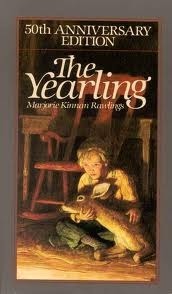C. Aubrey Hall's Blog, page 43
May 3, 2011
Filling Mighty Big Shoes
One of those pieces of writing advice handed out so often it ought to be a bumper sticker is, Make your characters larger than life.
Trouble is, most of those sage writing instructors don't bother to tell us exactly how to do that.
What does it even mean, anyway?
Let's consider three ways by which you can create bigger characters:
1. Through appearance. Whatever physical attributes you plan to give your character, exaggerate them. So if you're thinking one of your characters should be tall and extremely thin, take those aspects to an extreme.
Tall? How tall? Six foot-five inches? Six-eight?
Thin? So skinny that if the guy turned sideways he wouldn't cast a shadow? Emaciated to the point that his head is a skull with the skin still stretched over it?
2. Through goals. Fiction isn't about duplicating real life. Fiction is, in fact, more ordered than much of reality. So if your protagonist is centered on a specific, attainable goal and keeps striving to achieve it despite oppositional conflict and progressive setbacks, then your character is behaving larger than life by not giving up.
3. Through actions. In reality, if we see a problem out there on a big-city sidewalk, are we going to get involved? Would we even know what to do? Consider Jack Ryan, the protagonist of Tom Clancy's thriller PATRIOT GAMES. Ryan is attending a conference in London. He's brought his family along. The first time the reader sees Ryan in the book, he's finishing a meeting and intent on joining his family at a park. Terrorists attack a royal motorcade at that park. People are screaming and diving for cover. Ryan's wife and child crouch out of the line of fire. A normal guy would cower with his family, hoping for the police to arrive fast. But Ryan isn't ordinary. He's a book protagonist. So as soon as his family is secured, he runs straight to the car under assault and takes out the terrorists—saving lives, ending the attack, and getting himself seriously wounded in the process. His actions have made him larger than life. His background as an ex-Marine makes those actions plausible.
I can feel some of you squirming out there in discomfort. You may be thinking, I don't want my character to be so extreme in appearance. I'm not gonna write about some clownish type that's obsessive and ex-military. No way! I'll write about Joe Ordinary instead because if I don't play it safe and make my character small, normal, and unnoticeable, people will laugh at me.
Actually, they won't. Instead, they might blink and take notice of an interesting character who's so tall he can't fit in any kind of car other than a convertible and is willing to confront the creep that's blackmailing his sister.
Do you really think readers are going to care about Joe Ordinary who's five-eight and could stand to lose 20 pounds, who drives a brown, 4-door sedan, lives in a small brown brick house, walks a small brown dog around the block every evening at 5:32, and visits his mom on Sunday afternoons to mow her lawn? That's reality. And if it's not a disguise hiding Joe's true identity as a masked crusader who fights to save the downtrodden and hopeless, you have nothing to offer. Instead, think about those bestselling Clive Cussler adventures. Droves of fans love to read about Dirk Pitt, who lives in an airplane hangar, drives antique cars that he's restored himself, has escaped Cuba by rowing a bathtub to the Florida shores, and works as an underwater salvage expert in between defeating bad guys.
We live reality. We read about larger-than-life characters who dare to do what we can't or won't.
Be brave and don't fear exaggeration. It's fun!








April 27, 2011
I Wuv You T-H-I-S Much
As a secondary character role, the love interest can serve a variety of functions. At its most basic level, this is simply the individual whom the protagonist cares about. In such stories, the love interest looks attractive yet stays in the background.
There is so much more, however, that you can do with this story role. What if, for example, the antagonist is also in love with the same character? Now we have protagonist and antagonist vying for the affection of this person. Ah, the old love triangle plot structure. Gonna be conflict there!
Or the love interest can bring in a subplot that gives a story additional complexity and texture. For example, in the mystery novel ODDS AGAINST by Dick Francis, protagonist Sid Halley is still in love with his ex-wife Jenny. He knows their breakup is final, yet he is still chained psychologically by the feelings he has for her. At a few key points in the story's progression, that subplot surfaces, culminating in his meeting Jenny and her new husband. It gives Sid extra dimension as a character plus generates reader sympathy for him.
Winning the love interest's heart may serve as the reward component of a story's climax. So that, after the hero has won, some last wrinkle in the relationship is ironed out and now life really will be happily ever after for these characters.
The love interest generally needs to be a character that's attractive or appealing, worthy of the protagonist's affection. Otherwise, if the protagonist actively continues to pursue the love interest, readers are going to lose sympathy or even think the protagonist is a dunce.
One of the most tender and sympathetic "doomed" romances is a subplot in THE HUNCHBACK OF NOTRE DAME. The hunchback Quasimodo falls in love with the beautiful gypsy Esmeralda; she cannot love him back. He saves her life; at best, she can only give him a measure of compassion. It's not her fault. As readers of Victor Hugo or as an audience watching the movie version, we don't necessarily want Quasimodo and Esmeralda to fall in love with each other. She is already married and loves her husband. Yet through meeting Esmeralda, Quasimodo grows as a character. We see his humanity despite his hideous face … just as Esmeralda comes to recognize it.








April 26, 2011
Can I Trust You?
The role of the confidant is centered on trust. The character serving this story role should possess some degree of wisdom or experience, be able to offer insights or advice, and have the ability to listen.
Think about the real-life person you confide in. Why do you trust him or her with your innermost doubts, worries, and fears? Is it the fact that you share some common experience with this individual? Perhaps a secret? Or maybe you don't trust the confidant — not really — but the two of you are into some kind of trouble up to your necks, and this is the only one you can discuss the problem with.
A confidant can be an important character in the story, with possibly a small but key part to play. The confidant may supply the encouragement necessary to get the protagonist through the latter, most challenging, section of the story. And if the confidant becomes a mentor figure, the role may prove quite significant due to the character serving as an instructor instead of merely a listener.
Protagonists and antagonists alike may have their own separate confidants.
In the urban fantasy series, THE DRESDEN FILES, by Jim Butcher, protagonist wizard Harry Dresden has a confidant in the character called Bob, a spirit bound by an ancient curse. Bob is an invaluable resource of instruction on how to cast all sorts of spells, but he's also someone Harry can talk to and confide in.
In the original STAR TREK television series, Captain Kirk relied on the ship's doctor, "Bones" McCoy, for counsel and advice. Kirk didn't always take it, but at least he could talk over his problems.
In the Disney animated film, ALADDIN, the villain Jafar had a confidant in the parrot Iago.
In the movie, THE SOUND OF MUSIC, it was the Reverend Mother at the convent who served as Maria's confidant, someone she could spill her feelings and fears to when she would talk to no one else about her love for Captain Von Trapp.
And on it goes. There are endless examples from books, television, and film. The confidant is more than simply a sounding board. He or she can bolster motivation within the protagonist and provide the compassion that demonstrates to readers that the protagonist is worth caring about, and worthy of succeeding.








April 20, 2011
Lift That Bale, Sidekick!
Fiction and film are filled with famous and/or beloved sidekicks. Batman's Robin, Han Solo's Chewbacca, Travis McGee's Meyer, Stephanie Plum's Lula, Dr. Frankenstein's Igor, The Green Hornet's Kato, Blackadder's Baldrick . . . we could go on and on.
This story role fulfills the function of helper. That means a sidekick character should possess skills or abilities that can assist the protagonist in some way. Comedies play off this expectation sometimes by making the sidekick inept and anything but helpful, as in the 1944 Howard Hawks-directed film, TO HAVE AND HAVE NOT, where Humphrey Bogart's sidekick is a gin-soaked simpleton (played brilliantly by Walter Brennan). All Eddie can offer Harry Morgan is his absolute loyalty. And Harry's fondness and concern for Eddie display a softer side of his tough-guy character.

Walter Brennan as Eddie, in the 1944 film TO HAVE AND HAVE NOT, directed by Howard Hawks, screenplay by William Faulkner, based on a novel by Ernest Hemingway
Others allow the sidekick to shine brighter than the protagonist, as in P.G. Wodehouse's Bertie-and-Jeeves stories. It is the butler Jeeves who is the problem solver, and for every scheme and mishap that Bertie Wooster gets into, Jeeves figures out how Bertie can save the day.
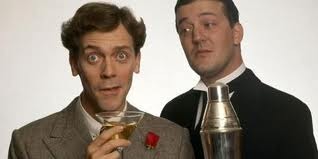
Hugh Laurie as Bertie and Stephen Fry as Jeeves in the BBC Production, JEEVES & WOOSTER, 1990-93
Sidekicks can generate reader sympathy for the protagonist through their desire to help. They can create additional tension or shock in a story when something befalls them. Readers then start to worry more about the plot's outcome because if disaster can happen to the sidekick, then it just might strike the protagonist, too.
Also, don't forget that villains can have sidekicks as well. Chances are they won't be as well developed as a protagonist's sidekick, but don't count on it.
Of all the story roles available in my writer's toolbox, the sidekick is my favorite.








April 19, 2011
A Villain By Any Other Name Would Still Be Rotten
The antagonist has good reason to grumble and scheme. The protagonist gets the star billing, but much of the story's success depends on the bad guy.
The story role of antagonist brings conflict to the table, and conflict is what helps the story advance and stay interesting. Conflict, after all, makes the outcome uncertain.
It's the antagonist's job, therefore, to oppose the main character.
Directly.
Immediately.
Constantly.
Unless you intend to create a one-dimensional, cartoonish villain, however, you need to figure out why the antagonist is in opposition. It should be a good, strong reason.
Now, beyond the basic responsibility of the antagonistic story role, we have something else to consider. Is your bad guy an antagonist or a villain?
Villains may be cruel, wicked, and devious. Antagonists may be annoying, obstructive, and stubborn. There's a whole range of traits to choose from. Just make sure you design your character with ingenuity, determination, unpredictability, and some degree of ruthlessness. The degree of badness then depends on your plot and the genre you're writing in.
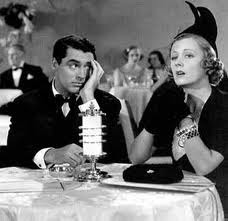
Cary Grant and Irene Dunne in 1937s THE AWFUL TRUTH, Columbia Pictures
For example, in a romance story the heroine plays the role of protagonist and the hero plays the role of antagonist. They have directly opposing goals: I want to marry him for happily ever after and bear his children VERSUS I am so not going to settle down, marry her, or have any kids! The plot deals with the conflict between the couple as physical attraction clashes with opposing goals. The hero, although the antagonist, is neither a terrible guy nor a villain. And once the pair's goals become the same, the story ends happily for them both.
A thriller, by contrast, requires a villain. Someone who wants to do grievous harm–whether physically or psychologically–on someone else. Consider the novel HEART SICK by Chelsea Cain. The protagonist is a cop trying to catch a female serial killer but is instead captured by her and tortured gruesomely.
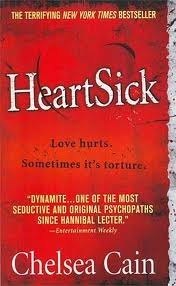
Book cover for Chelsea Cains bestselling novel HEARTSICK, Minotaur/St. Martins, 2007
Bad guys are seductive to the writers that create them. After all, these characters can do or say just about anything. They don't necessarily have a conscience to slow them down. It can prove liberating to write about them if you don't try to hold them back or tame them too much.
If your antagonist starts to become a bolder, more vivid character than your hero, don't squelch your villain! Go back and make a stronger character of your hero.








April 18, 2011
Starring the Protagonist
We all get that the protagonist is supposed to be the star of the story, right? Of course!
But it's not all glamor and star billing. This character role must fulfill certain functions, especially when it comes to satisfying reader expectations.
In commercial fiction — meaning stories written for mass entertainment and usually genre-tailored — the protagonist is a hero. Male or female doesn't matter. This character should take charge of the story action, should be heroic and larger than life in doing so, and should stand up to the antagonist in the story climax.
Did you know that in ancient Greek, part of the meaning of "hero" is sacrifice? In effect, a hero — by the most ancient definition — is someone willing to sacrifice himself for the sake of others.
Okay, so a fiction hero has the following responsibilities:
1) drive the story forward by pursuing a goal
2) stay active rather than passive
3) stand up to the antagonist despite the risks
4) bring about the solution to the story problem
Given all that, we can then design our protagonist accordingly. This individual may not be heroic at the story's beginning, but will be at the center of the action while getting the most viewpoint pages and reader attention. Therefore, construct her with certain abilities and traits that will qualify her to grow into acts of heroism.
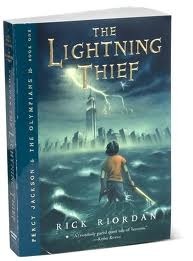
THE LIGHTNING THIEF by Rick Riordan, published 2005 by Hyperion Books, illustrated by John Rocco
Percy Jackson, the young protagonist of Rick Riordan's hit series THE YOUNG OLYMPIANS, is a dyslexic school kid bored on a field trip until his math teacher turns into a harpy (as in Greek mythological monster) and tries to kill him. From the first chapter onward, Percy starts discovering that he can stay alive, tackle big adventures, and find out what happened to Zeus's missing lightning bolt.
So, your hero may be Joe Ordinary as you've currently designed him. That's okay, as long as he's Joseph Extraordinary inside. Have you made him tenacious, stubborn, determined, pro-active, and gutsy? Think about Mattie Ross in TRUE GRIT. She's a young girl in the Old West, trying to hunt down vicious gunmen. She's not big and strong. She's not a gunslinger. But she's not going to quit until she achieves justice for her father's death.
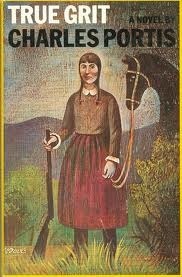
Cover for the 1968 Simon & Schuster 1st edition hardback of TRUE GRIT by Charles Portis
Have you given your hero skills that will enable him to do what's necessary? If it's implausible for your protagonist to be a bomb expert, then has he hired someone to do the job for him?
Heroes that are soft, squeamish, laid-back, passive, reactive, and uncomfortable with confrontation — and never grow away from those traits — simply do not possess the qualities that will enable them to fulfill protagonist function.








April 13, 2011
Story Roles
Another aspect of designing characters has to do with the role each will play in your story.
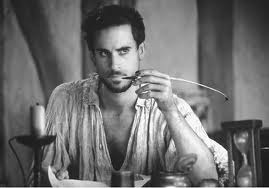
Joseph Fiennes in SHAKESPEARE IN LOVE, 1998, Miramax
A Review of the Basics
Primary Roles: the protagonist and antagonist
Secondary Roles: the sidekick, the confidant/mentor, the love interest
Minor Roles: bit players, people in the background, temporary characters, cabbies, messengers, etc.
Role helps define a character because readers bring certain expectations of what this individual will be doing. That in turn dictates some of the traits or attributes the character will have. From this framework you can then branch out.
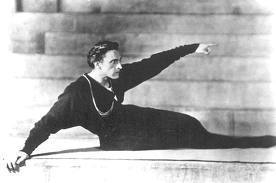
John Barrymore - named the greatest Shakespearean actor of his generation in the 1920s
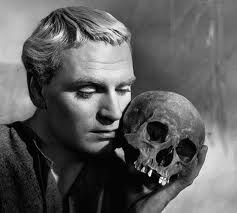
Laurence Olivier in HAMLET, 1948, Denham Studios
Clearly the two primary characters will be the best designed among your cast. An entire story can be built upon these two people. They — along with their opposing goals — drive the story from its beginning to the final showdown and conclusion.
The secondary roles add complications and texture. They can enrich your drama, bring poignancy or comedic relief, and enable you to write scenes that aren't always focused on the central antagonist. Both protagonist and antagonist can have their own sets of secondary characters to assist them as necessary.
Remember also that secondary characters can serve multiple functions. While you can give your protagonist two sidekicks, a mentor, and a love interest, thus creating four secondary characters to fill those roles, you can also combine them as needed. A single character may serve all three roles. Other combinations are possible in larger, more complex stories. For example, in the STAR WARS original trilogy, Darth Vader is Luke's antagonist. He's also the Emperor's sidekick. Eventually, his dual roles collide, bringing him into a sacrificial choice at the climax.
The minor roles fill in wherever your story needs people. They add veracity and make the backdrop to your story events appear more plausible. They can be a prop or feature in a scene. It's all up to what you require them to do for you.








April 5, 2011
Character Complexity
Are you familiar with Robert McKee's STORY? It's a rich and valuable text on writing techniques. Although it's slanted for screenwriters, its principles work equally well for authors of prose.
As McKee explains it, making a character complex involves establishing conflict on two or three levels in any given confrontation.
There's external conflict, internal conflict, and relationship conflict. Any scene can be written that deals only with external conflict or only with relationship conflict, but it won't be complex unless they're combined or internal conflict joins the mix.
Examples:
External conflict: Daughter versus Mom over the girl's choice of college. Mom wants Daughter to attend State and be a teacher. Daughter wants to attend Prestigious U and be anything but a teacher.
Internal conflict: Daughter doesn't want to be a teacher like her mother, yet she knows it's a practical, fairly secure career path. In Daughter's heart, safe equals boring. In Daughter's mind, safe means she might finally escape Mom's criticism. Daughter really wants to be a writer, which isn't practical or safe. Also, Daughter isn't sure whether she has the talent to achieve her dream. Her passion for the written word is at war with her desire to please Mom and to have an independent future.
Relationship conflict: Mom has raised her children as a single parent on one modest income. She can't afford to send Daughter to the expensive university. She feels that Daughter tends to be impractical and foolish. She wishes Daughter would listen to her advice and benefit from her experience. She's afraid that Daughter is too much like Ex-husband, a dreamer with a fancy degree that never achieved anything notable, except to break her heart.
Now, consider how the scene will go if it's written only on the level of external conflict. Then compare that with how its conflict will rage if all three levels are utilized. See the difference?








March 29, 2011
Something to Care About
What stirs your character's heart? Beyond the challenges of overcoming obstacles and forging ahead toward the story goal, what does your protagonist care about? What matters to this individual you're trying to create from the dust and cobwebs of your imagination?
In Majorie Rawlings's classic YA novel, THE YEARLING, a young boy adopts an orphaned fawn as a pet despite his father's objections. The story is poignant and almost unbearably tragic. As we read the first few chapters we want to cry out a warning to this boy: "Don't lose your heart! Don't fall in love with this little deer! You're going to be hurt!" But the boy continues, unable to hear us, and of course his heart is broken.
But isn't that the point?
Your characters must be able to feel intensely. They must have something they love or yearn for, something they're willing to risk their emotions for. They cannot — indeed, they must not — freeze their heart and protect it from harm. Otherwise, what have we to write about?
Giving them something to protect or believe in or honor or yearn for also helps to bring them alive. Readers can empathize with the abused, emotionally damaged boy Georgie — protagonist of THE LOTTERY ROSE by Irene Hunt — because he loves a sickly little potted rose bush that he wins in a contest. The plant symbolizes Georgie's one chance to remain a human being. It's his hope, the only thing he can care about. But how vividly it brings him to life on the page! It enables readers to find common ground with him despite his problems.

MRS. MINIVER, 1942, MGM Studios
In the old movie classic MRS. MINIVER, starring Greer Garson and Walter Pidgeon, there's a wonderful minor character in the story — the man who sells tickets at the train station and grows roses as a hobby. He's developed a magnificent rose that he names for Mrs. Miniver, and he enters it in the local flower show. And when he wins the prize for the best rose, he's so shocked and stunned he hardly knows what's happened to him. And his emotions — his pride and disbelief, his sense of dawning pride and accomplishment — make him vivid and endearing. We see a man living a humble life of no special significance, yet his passion for gardening and roses makes him stand out … even for a short time.
And, most importantly of all, when a character cares for something — thereby becoming vulnerable and human and sympathetic — what in the story is going to jeopardize it?








March 28, 2011
The Benefits of Fear
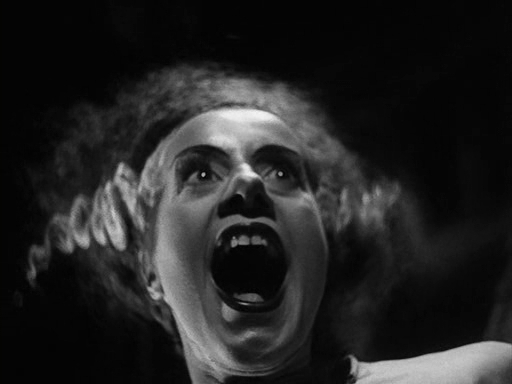
1935 BRIDE OF FRANKENSTEIN, Universal Pictures
Here's another angle of character design to consider:
What's your character — especially your protagonist — afraid of?
Do you know? Have you ever thought about it?
Deep down inside, in the secret places of this character's heart, there has to be something he or she fears. Something he dreads. Something she's denied or evaded for a long time. Exactly what does your protagonist live with, day in and day out? Maybe that secret fear has been locked away for years. But it's always in there, waiting for a chance to come out. It can serve you twofold:
1) By giving your character extra dimension. How has this fear or lack shaped the individual as a person? Maybe she's overcompensated in some way, or learned skills that she would never have otherwise sought. Perhaps it's warped him, festering away day after day, year after year.
2) By setting up for the story climax. What your character fears speaks directly to that individual's inner arc of change.
When you start writing the story climax, the time of denial and evasion is over. The antagonist is going to possibly find out about this fear and exploit it, or the protagonist is going to have to confront that old, inner problem and deal with it in order to survive the climax.








C. Aubrey Hall's Blog
- C. Aubrey Hall's profile
- 7 followers


